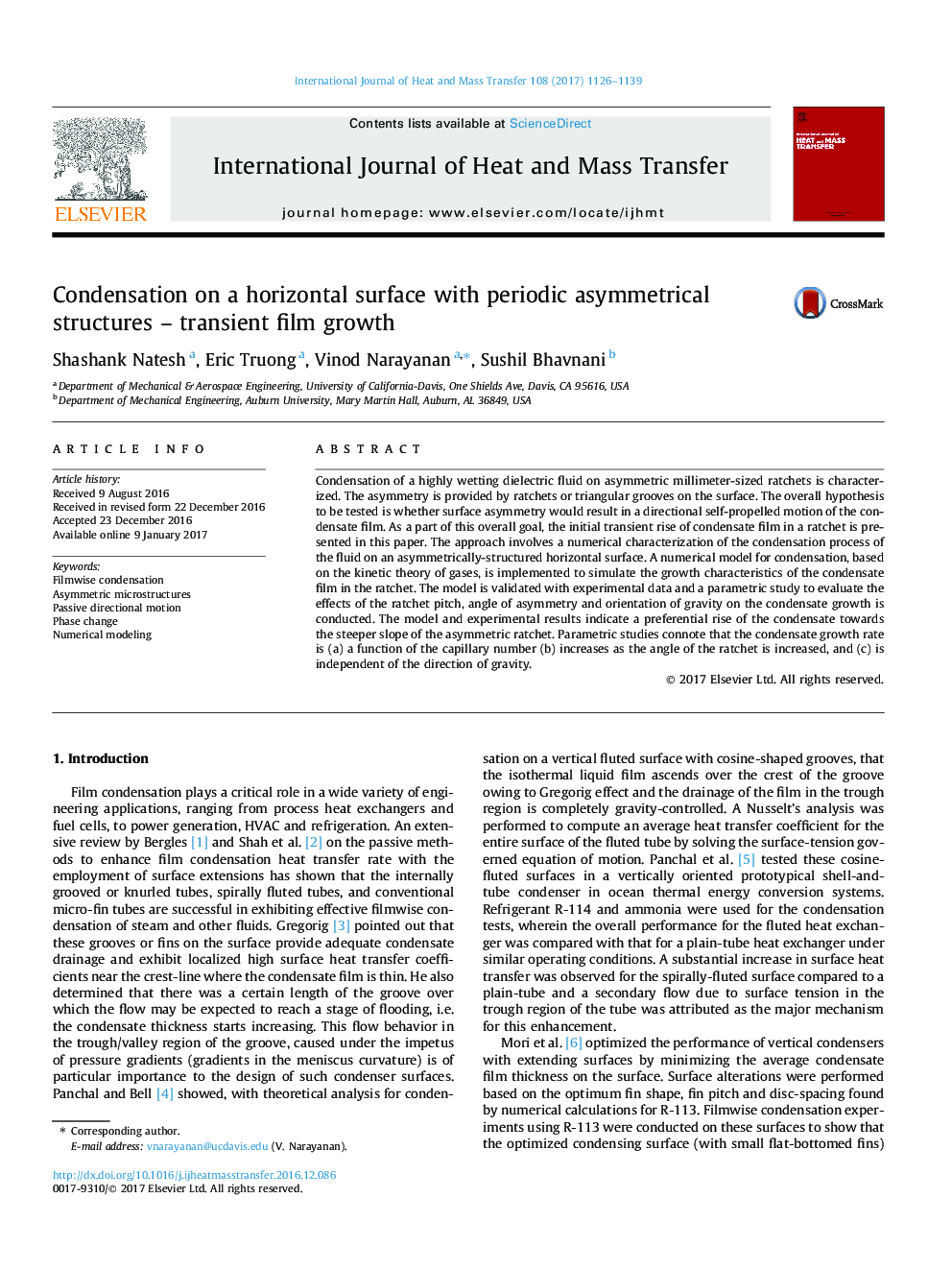| Article ID | Journal | Published Year | Pages | File Type |
|---|---|---|---|---|
| 4994347 | International Journal of Heat and Mass Transfer | 2017 | 14 Pages |
Abstract
Condensation of a highly wetting dielectric fluid on asymmetric millimeter-sized ratchets is characterized. The asymmetry is provided by ratchets or triangular grooves on the surface. The overall hypothesis to be tested is whether surface asymmetry would result in a directional self-propelled motion of the condensate film. As a part of this overall goal, the initial transient rise of condensate film in a ratchet is presented in this paper. The approach involves a numerical characterization of the condensation process of the fluid on an asymmetrically-structured horizontal surface. A numerical model for condensation, based on the kinetic theory of gases, is implemented to simulate the growth characteristics of the condensate film in the ratchet. The model is validated with experimental data and a parametric study to evaluate the effects of the ratchet pitch, angle of asymmetry and orientation of gravity on the condensate growth is conducted. The model and experimental results indicate a preferential rise of the condensate towards the steeper slope of the asymmetric ratchet. Parametric studies connote that the condensate growth rate is (a) a function of the capillary number (b) increases as the angle of the ratchet is increased, and (c) is independent of the direction of gravity.
Related Topics
Physical Sciences and Engineering
Chemical Engineering
Fluid Flow and Transfer Processes
Authors
Shashank Natesh, Eric Truong, Vinod Narayanan, Sushil Bhavnani,
